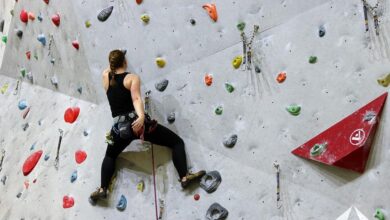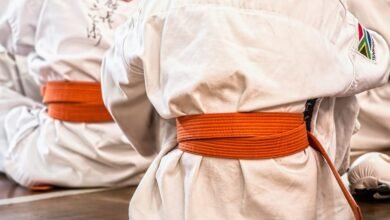Age-Defying Strength: Senior Fitness for Optimal Health and Longevity

Aging is a natural process, but it doesn’t have to mean a decline in strength and vitality. In fact, with the right approach to fitness, seniors can unlock age-defying strength, improve their health, and enhance their quality of life. This guide explores the comprehensive approach to senior fitness, emphasizing strength, balance, flexibility, and cardiovascular health—each crucial for longevity and optimal living.
Understanding the Importance of Fitness in Seniors
Exercise is beneficial for all ages, but it holds particular importance for seniors. Regular physical activity can help prevent or manage numerous chronic conditions prevalent in older adults, such as heart disease, diabetes, arthritis, and osteoporosis. Moreover, maintaining muscle mass and bone density is crucial for reducing the risk of falls and fractures, one of the leading causes of injury in seniors.
Core Components of Senior Fitness
1. Strength Training
Strength training—or resistance training—involves exercises that improve muscle strength and endurance. Engaging in strength training can counteract age-related muscle loss (sarcopenia). It can improve metabolism, aid in weight management, and maintain functional independence in daily activities.
Key Recommendations:
- Frequency: Aim for at least two days a week.
- Intensity: Start with lighter weights and gradually increase as strength improves.
- Exercises: Focus on compound movements such as squats, lunges, push-ups, and pulling exercises like rows. Utilize resistance bands, dumbbells, or body-weight exercises.
2. Cardiovascular Exercise
Cardiovascular or aerobic exercises are essential for heart health, improving lung capacity, and boosting mood and energy levels. Activities that increase heart rate, such as walking, cycling, swimming, or dancing, are beneficial.
Key Recommendations:
- Frequency: Aim for at least 150 minutes of moderate-intensity or 75 minutes of vigorous-intensity cardio per week.
- Intensity: Moderate intensity (e.g., brisk walking) where you can talk but not sing.
3. Flexibility and Balance
With age, both flexibility and balance tend to decline, increasing the risk of falls and injuries. Incorporating exercises that improve these areas helps maintain mobility and coordination.
Key Recommendations:
- Stretching: Include stretching exercises in every workout session. Focus on major muscle groups and hold each stretch for 15-30 seconds.
- Balance Exercises: Engage in activities that challenge balance, such as tai chi, yoga, or specific balance exercises like standing on one foot.
4. Functional Fitness
Functional fitness mimics everyday actions to help improve strength, balance, and flexibility in activities of daily living. This includes movements such as bending, lifting, pushing, and pulling.
Key Recommendations:
- Functional Exercises: Incorporate exercises like sit-to-stand, step-ups, and carrying weighted objects to build practical strength and mechanics.
- Progressive Challenge: Gradually increase complexity and resistance to continue advancing functional capabilities.
Designing a Senior Fitness Program
Creating a structured fitness program requires attention to individual needs and goals. Here’s how to design a senior fitness plan:
Assess Baseline Fitness
Before beginning any fitness program, it’s crucial to assess the current fitness level, medical conditions, and physical limitations. Consult with a healthcare provider or a certified fitness trainer for a comprehensive evaluation.
Set Realistic Goals
Goals should be specific, measurable, achievable, relevant, and time-bound (SMART). Examples include aiming to walk a certain distance per week, lifting a specific weight, or mastering a new balance exercise in a given time frame.
Warm-Up and Cool Down
Every exercise session should begin with a 5-10 minute warm-up to prepare the body and prevent injuries, and end with a cool-down to gradually lower heart rate and aid in recovery. Warm-up could include light cardio, such as walking or gentle cycling, combined with dynamic stretches.
Balanced Routine
A well-rounded routine will include elements of strength, cardiovascular, flexibility, and balance training. Here’s a sample weekly plan:
- Monday: Strength training (upper body) + flexibility exercises.
- Tuesday: 30 minutes of moderate-intensity cardio + balance exercises.
- Wednesday: Strength training (lower body) + stretching.
- Thursday: 30 minutes of low-impact cardio (swimming or cycling).
- Friday: Full-body functional fitness training + balance exercises.
- Saturday: Gentle yoga or tai chi + flexibility exercises.
- Sunday: Active rest day (light walking or recreational activities).
Progressive Overload
Gradually increase the intensity, duration, or complexity of exercises over time to continue making gains. This might mean adding more weight to strength exercises, walking at a faster pace, or incorporating more challenging balance poses.
Motivation and Sustainability
Maintaining consistency in a fitness routine requires motivation and habit-building strategies. Here are some tips to sustain fitness:
Social Interaction
Exercise can be more enjoyable when done in groups. Join fitness classes oriented towards seniors, walking clubs, or community activities.
Track Progress
Keep a fitness journal to record workouts, track progress, and celebrate milestones. This can provide motivation and a sense of achievement.
Reward System
Reward yourself after reaching significant goals. It doesn’t have to be extravagant—a simple treat or a day off to relax can be motivating.
Professional Guidance
Consider hiring a personal trainer specializing in senior fitness to guide you through proper form and progression, ensuring safety and effectiveness.
Nutrition and Hydration for Senior Fitness
Exercise and nutrition are inseparable when aiming for optimal health and longevity. Here’s how to align your dietary habits with your fitness goals:
Balanced Diet
- Protein: Essential for muscle repair and growth. Include lean meats, fish, legumes, and dairy.
- Omega-3 Fatty Acids: Support joint health and reduce inflammation. Found in fatty fish, flax seeds, and walnuts.
- Calcium and Vitamin D: Crucial for bone health. Include dairy products, fortified foods, and consider supplements if necessary.
- Hydration: Seniors are more prone to dehydration. Aim to drink at least 8 cups of water per day, more if engaging in intense exercise.
Post-Workout Nutrition
Refuel with a balanced meal or snack within 30-60 minutes after exercising, emphasizing protein and carbohydrates to repair muscles and replenish glycogen stores.
Addressing Common Challenges
Overcoming Barriers
Many seniors face obstacles such as chronic conditions, mobility limitations, or lack of motivation. Tailoring the fitness program to individual capabilities and priorities can mitigate these challenges. Always start at a comfortable intensity and gradually build up. Seek support from friends, family, or fitness professionals.
Handling Setbacks
Setbacks are natural. Whether due to illness, injury, or life events, it’s important to be patient and resume activities gradually. Listen to your body and adjust the intensity as needed.
Prioritizing Safety
Safety should always be the priority. Use proper equipment, maintain good form, and avoid exercises that cause pain or discomfort. Consult with a healthcare professional before starting any new fitness regimen, especially if there are existing health concerns.
Conclusion
Unlocking age-defying strength through fitness is a realistic and empowering goal for seniors. By incorporating strength, cardiovascular, flexibility, and balance exercises into a regular routine, older adults can significantly enhance their health, longevity, and quality of life. Remember, it’s never too late to start—small, consistent steps can lead to profound improvements in overall well-being. Embrace the journey to a stronger, healthier, and more vibrant life.
#ChatGPT assisted in the creation of this article.




